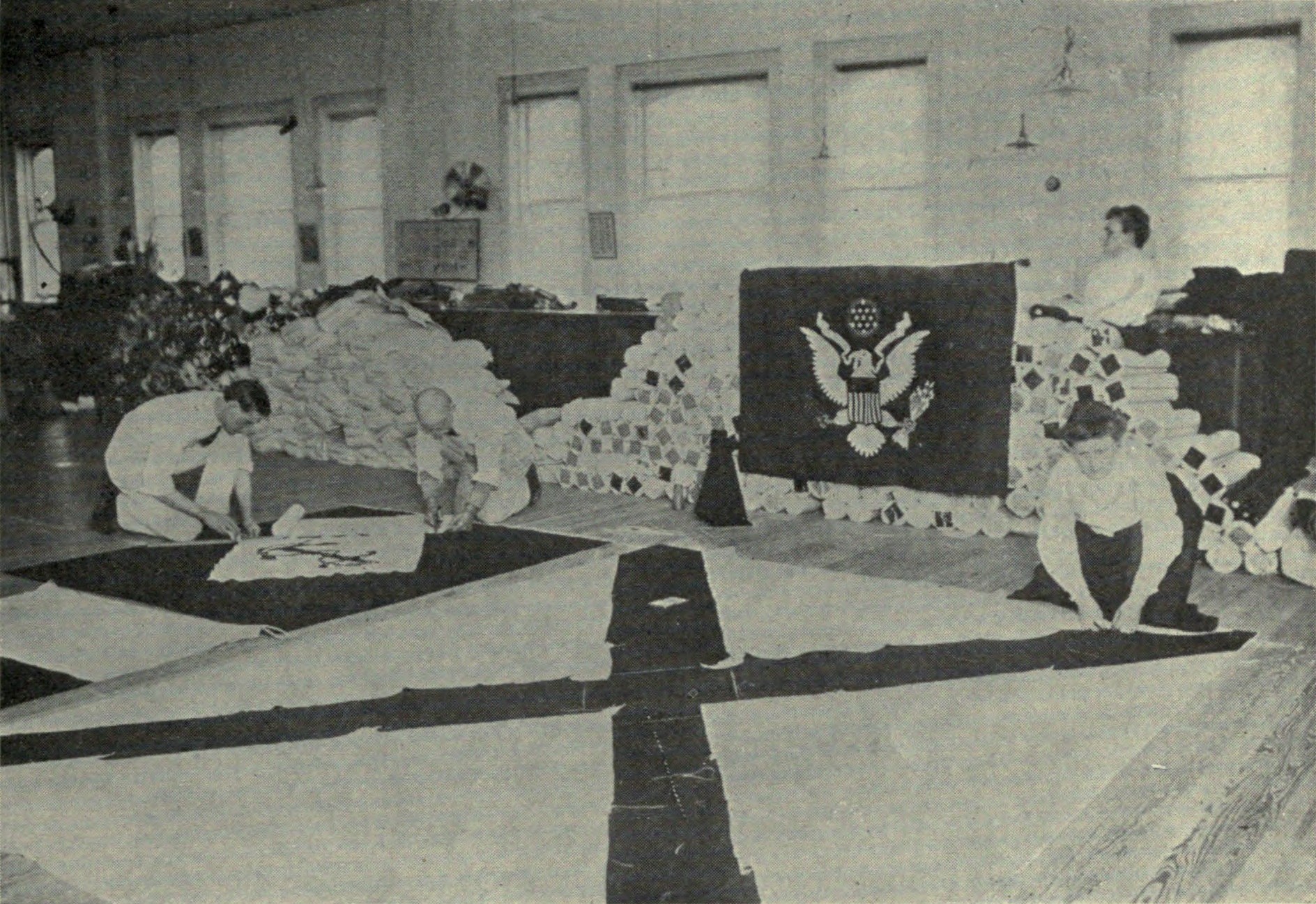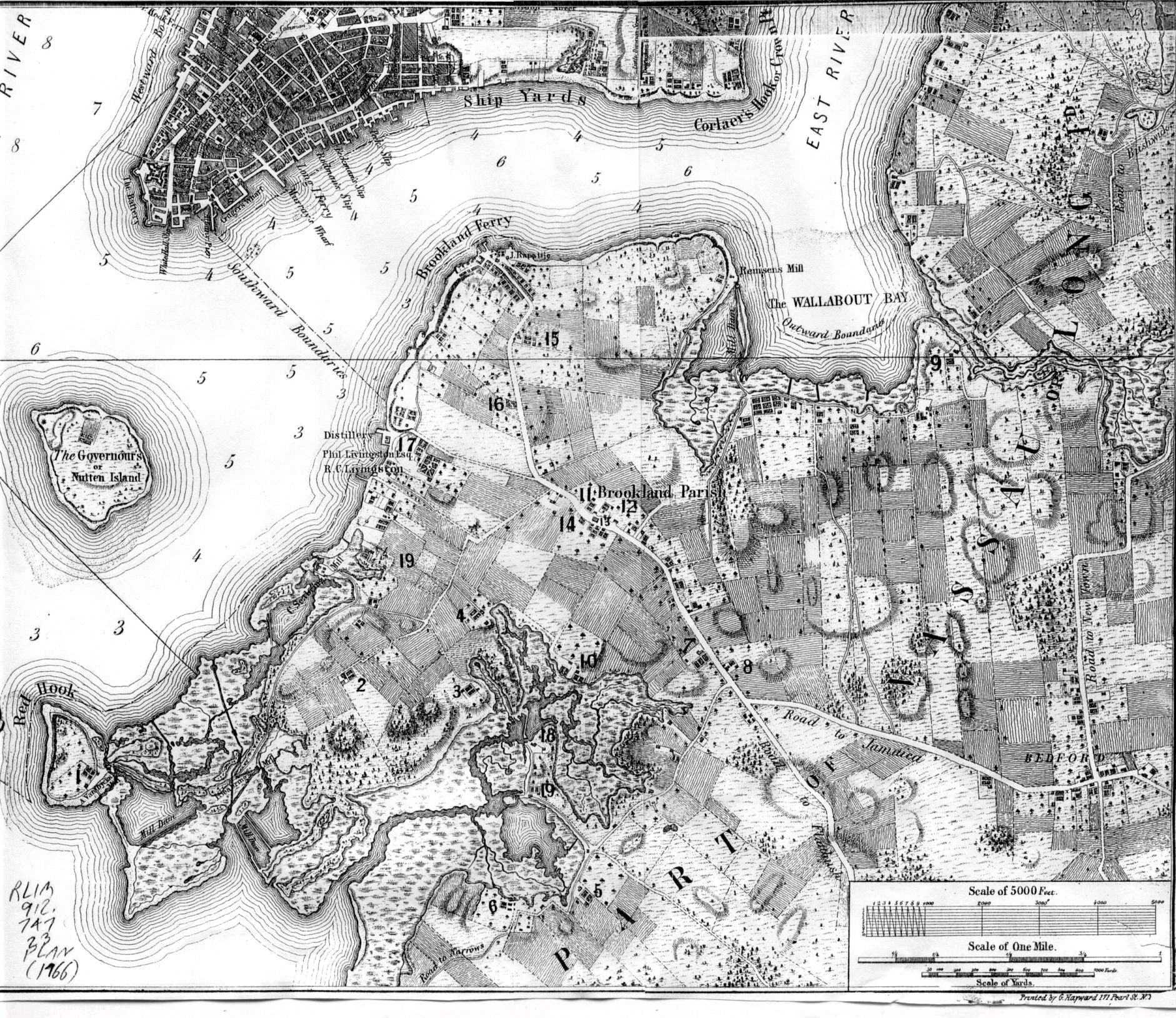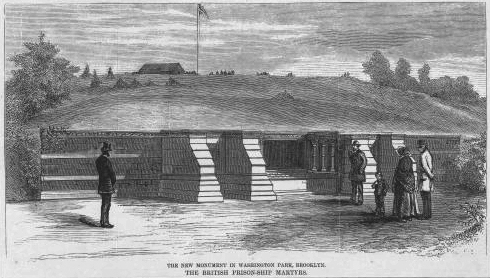|
Brooklyn Navy Yard
The Brooklyn Navy Yard (originally known as the New York Navy Yard) is a shipyard and industrial complex located in northwest Brooklyn in New York City, New York. The Navy Yard is located on the East River in Wallabout Bay, a semicircular bend of the river across from Corlears Hook in Manhattan. It is bounded by Navy Street to the west, Flushing Avenue to the south, Kent Avenue to the east, and the East River on the north. The site, which covers , is listed on the National Register of Historic Places. The Brooklyn Navy Yard was established in 1801. From the early 1810s through the 1960s, it was an active shipyard for the United States Navy, and was also known as the United States Naval Shipyard, Brooklyn and New York Naval Shipyard at various points in its history. The Brooklyn Navy Yard produced wooden ships for the U.S. Navy through the 1870s, and steel ships after the American Civil War in the 1860s. The Brooklyn Navy Yard has been expanded several times, and at its peak, i ... [...More Info...] [...Related Items...] OR: [Wikipedia] [Google] [Baidu] |
Brooklyn
Brooklyn () is a borough of New York City, coextensive with Kings County, in the U.S. state of New York. Kings County is the most populous county in the State of New York, and the second-most densely populated county in the United States, behind New York County (Manhattan). Brooklyn is also New York City's most populous borough,2010 Gazetteer for New York State . Retrieved September 18, 2016. with 2,736,074 residents in 2020. Named after the Dutch village of Breukelen, Brooklyn is located on the w ... [...More Info...] [...Related Items...] OR: [Wikipedia] [Google] [Baidu] |
Quarters A, Brooklyn Navy Yard
Quarters A, also known as the Commandant's House, is a historic house on Evans Street in the Vinegar Hill neighborhood of Brooklyn, New York City. Built beginning in 1805, with a number of later alterations, it remains a prominent example of Federal architecture in New York City. It was designated a National Historic Landmark in 1974 for its association with Matthew C. Perry, commandant of the adjacent Brooklyn Navy Yard 1841–1843, whose opening of Japan to the west in 1854 revolutionized trade and international affairs. The building is now privately owned. Description and history The former Commandant's House is set on a bluff overlooking the western side of the Brooklyn Navy Yard, a few blocks south of the East River. It is accessed via a gated drive at the junction of Little and Evans Streets. The house is three and a half stories in height, of wood-frame construction, and finished in wooden clapboards. The building has an extensive history of alteration, but the interior ... [...More Info...] [...Related Items...] OR: [Wikipedia] [Google] [Baidu] |
John Adams
John Adams (October 30, 1735 – July 4, 1826) was an American statesman, attorney, diplomat, writer, and Founding Fathers of the United States, Founding Father who served as the second president of the United States from 1797 to 1801. Before Presidency of John Adams, his presidency, he was a leader of the American Revolution that achieved independence from Kingdom of Great Britain, Great Britain, and during the war served as a diplomat in Europe. He was twice elected vice president of the United States, vice president, serving from 1789 to 1797 in a prestigious role with little power. Adams was a dedicated diarist and regularly corresponded with many important contemporaries, including his wife and adviser Abigail Adams as well as his friend and rival Thomas Jefferson. A lawyer and political activist prior to the Revolution, Adams was devoted to the right to counsel and presumption of innocence. He defied anti-British sentiment and successfully defended British soldiers agai ... [...More Info...] [...Related Items...] OR: [Wikipedia] [Google] [Baidu] |
Spanish–American War
, partof = the Philippine Revolution, the decolonization of the Americas, and the Cuban War of Independence , image = Collage infobox for Spanish-American War.jpg , image_size = 300px , caption = (clockwise from top left) , date = April 21 – August 13, 1898() , place = , casus = , result = American victory *Treaty of Paris (1898), Treaty of Paris of 1898 *Founding of the First Philippine Republic and beginning of the Philippine–American War * German–Spanish Treaty (1899), Spain sells to Germany the last colonies in the Pacific in 1899 and end of the Spanish Empire in Spanish colonization of the Americas, America and Asia. , territory = Spain relinquishes sovereignty over Cuba; cedes Puerto Rico, Guam and the Philippine Islands to the United States. $20 million paid to Spain by the United States for infrastructure owned by Spain. , combatant1 = United State ... [...More Info...] [...Related Items...] OR: [Wikipedia] [Google] [Baidu] |
Wallabout, Brooklyn
Wallabout is a neighborhood in the New York City borough of Brooklyn that dates back to the 17th century. It is one of the oldest areas of Brooklyn, in the area that was once Wallabout Bay but has largely been filled in and is now the Brooklyn Navy Yard. The name Wallabout comes from the 17th century, when a group of Walloons, French-speaking Protestants from what is now Belgium, settled along the nearby bay. They called it “Waal-bogt,” or “bend in the harbor.” It is a mixed use area with an array of old wood-frame buildings, public housing, brick townhouses and warehouses. It is bounded by Navy Street to the west, the Brooklyn Navy Yard and Flushing Avenue to the north, Myrtle Avenue to the south and Marcy Avenue to the east. In the early 1800s, however, Wallabout was just a village inside of the town of Brooklyn. The Brooklyn we know today was divided up into six towns: Brooklyn, Gravesend, Flatlands, Flatbush, New Utrect, and Bushwick. Wallabout was one of the village ... [...More Info...] [...Related Items...] OR: [Wikipedia] [Google] [Baidu] |
Fort Greene, Brooklyn
Fort Greene is a neighborhood in the northwestern part of the New York City borough of Brooklyn. The neighborhood is bounded by Flushing Avenue and the Brooklyn Navy Yard to the north, Flatbush Avenue Extension and Downtown Brooklyn to the west, Atlantic Avenue and Prospect Heights to the south, and Vanderbilt Avenue and Clinton Hill to the east. The Fort Greene Historic District is listed on the New York State Registry and on the National Register of Historic Places, and is a New York City designated historic district. The neighborhood is named after an American Revolutionary War era fort that was built in 1776 under the supervision of General Nathanael Greene of Rhode Island. General Greene aided General George Washington during the Battle of Long Island in 1776. Fort Greene Park, originally called "Washington Park" is Brooklyn's first. In 1864, Fort Greene Park was redesigned by Frederick Law Olmsted and Calvert Vaux; the park notably includes the Prison Ship Martyrs' Monu ... [...More Info...] [...Related Items...] OR: [Wikipedia] [Google] [Baidu] |
Prison Ship Martyrs' Monument
The Prison Ship Martyrs' Monument is a war memorial at Fort Greene Park, in the New York City borough of Brooklyn. It commemorates more than 11,500 American prisoners of war who died in captivity aboard sixteen British prison ships during the American Revolutionary War. The remains of a small fraction of those who died on the ships are interred in a crypt beneath its base. The ships included HMS ''Jersey'', ''Scorpion'', ''Hope'', ''Falmouth'', ''Stromboli'', ''Hunter'', and others.Wilson, James Grant''The memorial History of the City of New-York, From its First Settlement to the Year 1892'' vol. IV New York:New-York History Company, 1893, pp. 8–9. Accessed: January 22, 2012 Their remains were first gathered and interred in 1808. In 1867 landscape architects Frederick Law Olmsted and Calvert Vaux, designers of Central Park and Prospect Park, were engaged to prepare a new design for Washington Park as well as a new crypt for the remains of the prison ship martyrs. [...More Info...] [...Related Items...] OR: [Wikipedia] [Google] [Baidu] |
Prison Ship
A prison ship, often more accurately described as a prison hulk, is a current or former seagoing vessel that has been modified to become a place of substantive detention for convicts, prisoners of war or civilian internees. While many nations have deployed prison ships over time, the practice was most widespread in 18th- and 19th-century Britain, as the government sought to address the issues of overcrowded civilian jails on land and an influx of enemy detainees from the War of Jenkins' Ear, the Seven Years' War and the French Revolutionary and Napoleonic Wars. History The terminology "hulk" comes from the Royal Navy meaning a ship incapable of full service either through damage or from initial non-completion. In England in 1776, during the reign of King George III, due to a shortage of prison space in London, the concept of "prison hulks" moored in the Thames, was introduced to meet the need for prison space. The first such ship came into use on 15 July 1776 under command o ... [...More Info...] [...Related Items...] OR: [Wikipedia] [Google] [Baidu] |
American Revolutionary War
The American Revolutionary War (April 19, 1775 – September 3, 1783), also known as the Revolutionary War or American War of Independence, was a major war of the American Revolution. Widely considered as the war that secured the independence of the United States, fighting began on April 19, 1775, followed by the Lee Resolution on July 2, 1776, and the Declaration of Independence on July 4, 1776. The American Patriots were supported by the Kingdom of France and, to a lesser extent, the Dutch Republic and the Spanish Empire, in a conflict taking place in North America, the Caribbean, and the Atlantic Ocean. Established by royal charter in the 17th and 18th centuries, the American colonies were largely autonomous in domestic affairs and commercially prosperous, trading with Britain and its Caribbean colonies, as well as other European powers via their Caribbean entrepôts. After British victory over the French in the Seven Years' War in 1763, tensions between the motherland and he ... [...More Info...] [...Related Items...] OR: [Wikipedia] [Google] [Baidu] |
Walloons
Walloons (; french: Wallons ; wa, Walons) are a Gallo-Romance ethnic group living native to Wallonia and the immediate adjacent regions of France. Walloons primarily speak '' langues d'oïl'' such as Belgian French, Picard and Walloon. Walloons are historically and primarily Roman Catholic. In modern Belgium, Walloons are, by law, termed a "distinctive linguistic and ethnic community" within the country, as are the neighbouring Flemish, a Germanic group. When understood as a regional identification, the ethnonym is also extended to refer to the inhabitants of the Walloon region in general, regardless of ethnicity or ancestry. Etymology The term ''Walloon'' is derived from ''*walha'', a Proto-Germanic term used to refer to Celtic and Latin speakers. ''Walloon'' originated in Romance languages alongside other related terms, but it supplanted them. Its oldest written trace is found in Jean de Haynin's ''Mémoires de Jean, sire de Haynin et de Louvignies'' in 1465, where it r ... [...More Info...] [...Related Items...] OR: [Wikipedia] [Google] [Baidu] |
Joris Jansen Rapelje
Joris Jansen Rapelje (28 April 1604 – 21 February 1662/63) was a member of the Council of Twelve Men in the Dutch West India Company colony of New Netherland. He and his wife Catalina (Catalyntje) Trico (1605–1689) were among the earliest settlers in New Netherland. Biography Joris Rapelje and Catalina Trico were married 21 January 1624, at the Walloon Church of Amsterdam. Rapelje, an illiterate 19-year-old textile worker whose origin was noted in the registry as 'Valencenne' (Valenciennes, Spanish Netherlands), and his 18-year-bride, had no family present to witness the ceremony. Four days later, on 25 January, the couple departed from Amsterdam, bound for North America. They were traveling aboard the first ships to bring immigrants and workers to New Netherland. The Rapalje family were first employed at Fort Orange, in what would eventually become Albany, New York. Fort Orange was being erected by the Dutch West India Company as a trading post on the west bank of the Huds ... [...More Info...] [...Related Items...] OR: [Wikipedia] [Google] [Baidu] |
Canarsie Indians
The Canarsee (also Canarse and Canarsie) were a band of Munsee-speaking Lenape who inhabited the westernmost end of Long Island at the time the Dutch colonized New Amsterdam in the 1620s and 1630s. They are credited with selling the island of Manhattan to the Dutch, even though they only occupied its lower reaches, with the balance the seasonal hunting grounds of the Wecquaesgeek of the Wappinger people to the north."The $24 Swindle" Nathaniel Benchley, ''American Heritage'', 1959, Vol 11, Issue 1 The Canarsee were among the peoples who were conflated with other Long Island bands into a group called the , an aggregation which failed to recognize their linguistic differences and varying tribal affinities. Name< ...
|








